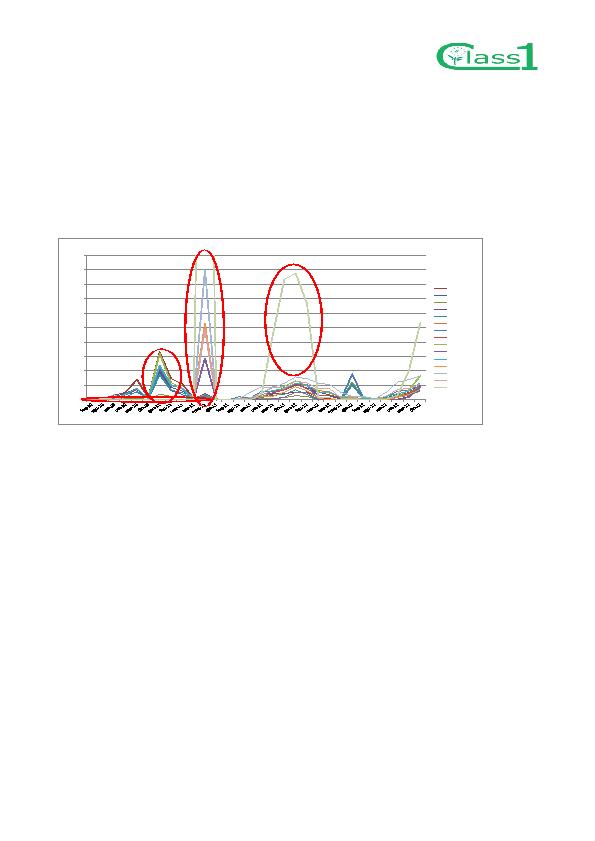
42
The rest of the energy is supposed to be used for lighting and electrical devices. Statistically, this electrical
demand is annually 2000 kWh for flats.
The monitored data from the data loggers were modified in order to compare them more accurately with
the value required in BR08. The requirements in BR08 for the total energy
demand for dwellings
prescribe the energy demand of heating, ventilation, cooling and domestic hot water (DHW) and
the maximum allowed annual demand is 35 kWh/mē plus 1100 kWh divided by the heated floor
area (mē).
For each flat the total energy annual demand has been calculated as the sum of the annual energy for
space heating, the energy for DHW, and the estimated primary energy for ventilation.
Figure 47. Example of inconsistent and neglected data
To analyze the performance related to space heating energy demands, the monthly consumption data have
been normalized with the actual Degree Days.
The 66 low-dense flats came in three sizes, 82 mē, 84 mē, and 110 mē. In most of the flats the monitoring
was on-going since July 2010. The majority of the flats, more than 80 %, had monitored data for three
years, which gave a good basis for a reliable analysis (see Figure 48).
0
5
10
15
20
25
30
35
40
45
50
M
e
asu
r
e
d
m
o
n
tly
c
o
n
su
m
p
tii
o
n
[kWh
/
m
2
]
Date
Heating consumption - 110 m
2
flat - add. 3:35
3 g Heating
4 e Heating
7 f Heating
8 g Heating
11 f Heating
12 e Heating
15 f Heating
16 f Heating
19 f Heating
20 f Heating
23 f Heating
24 g Heating
31 g Heating
32 f Heating
35 f Heating
